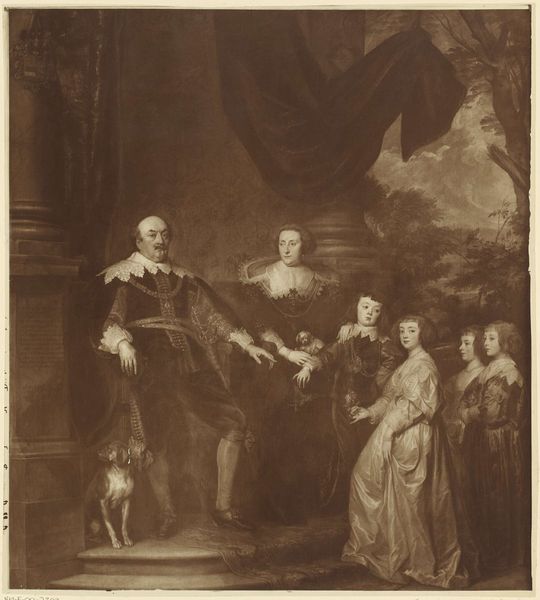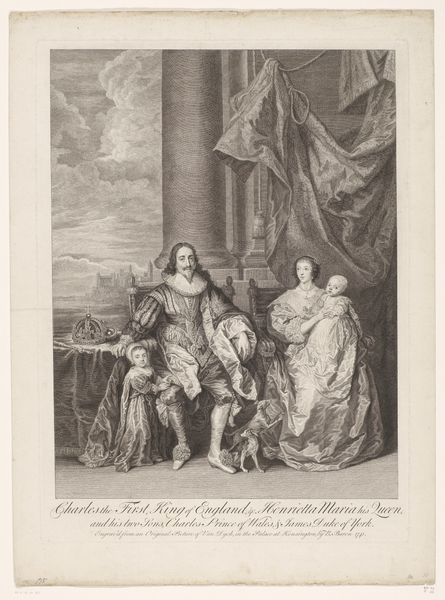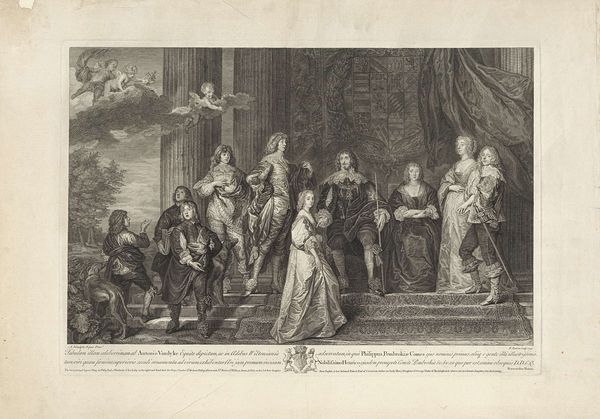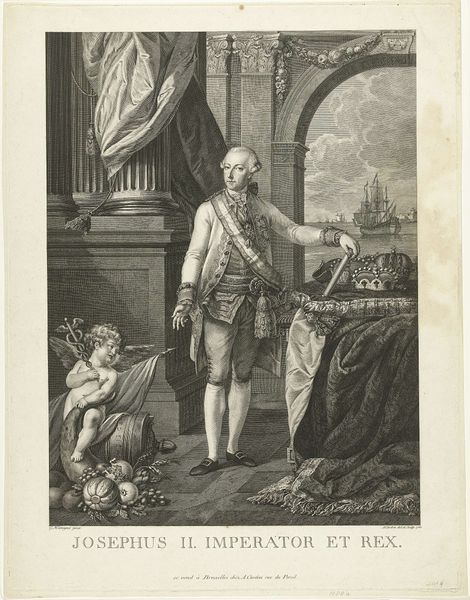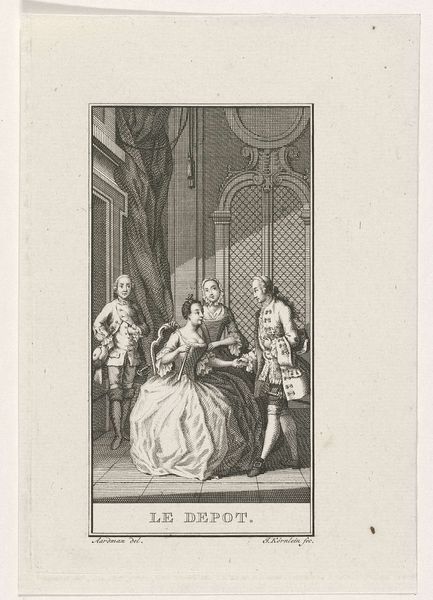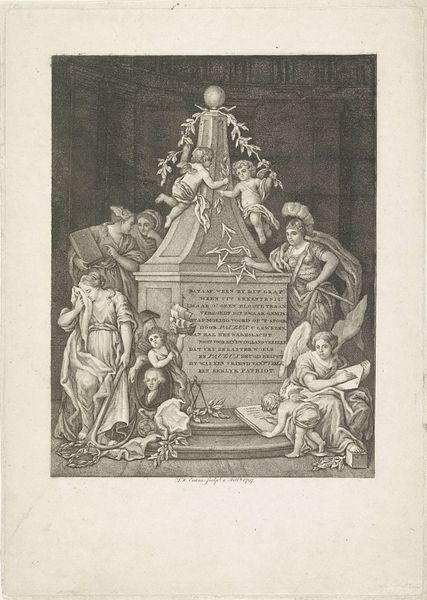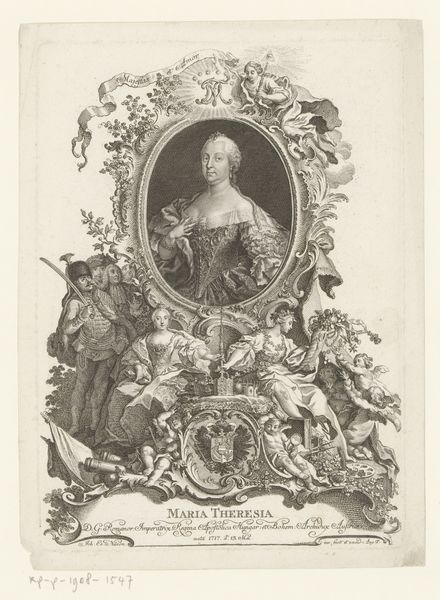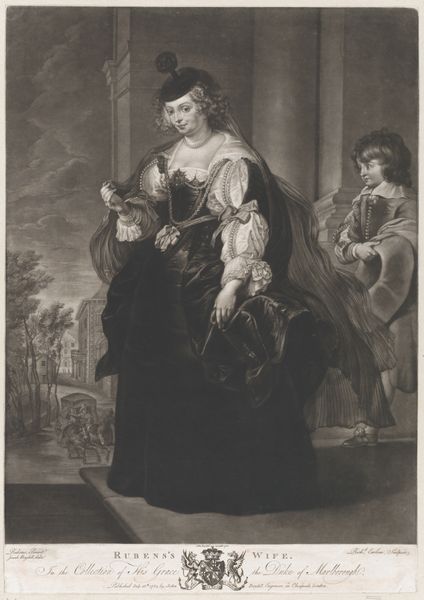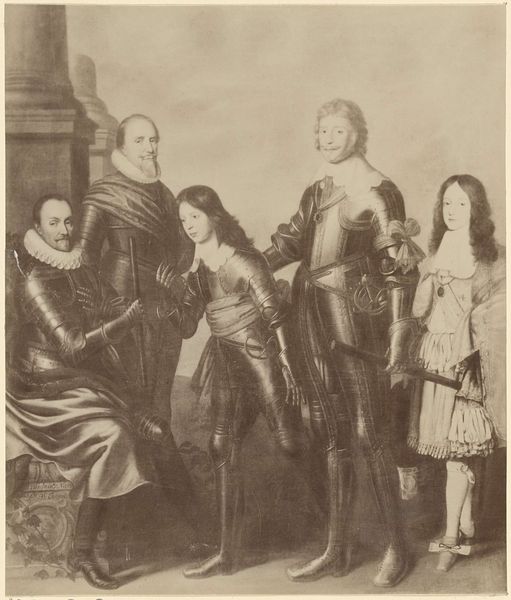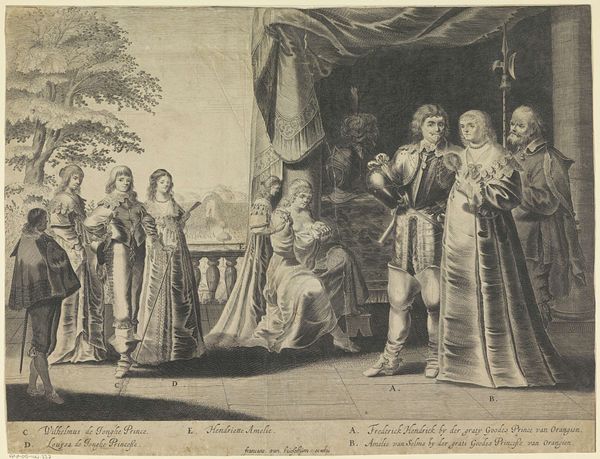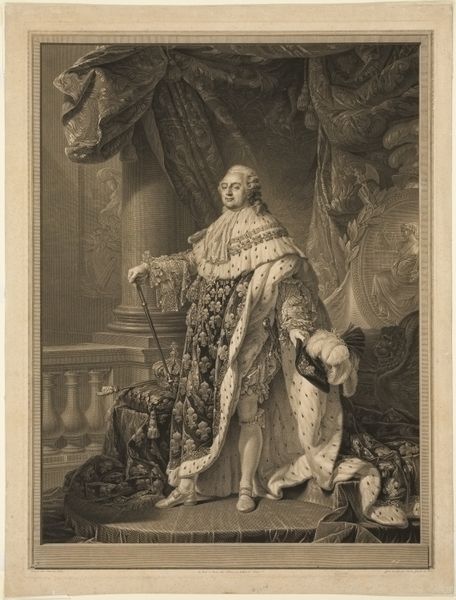
Familieportret van Johan VIII, graaf van Nassau-Siegen, Ernestine Yolande de Ligne en hun kinderen 1761
0:00
0:00
bernardbaron
Rijksmuseum
Dimensions: height 589 mm, width 481 mm
Copyright: Rijks Museum: Open Domain
Curator: Before us, we have an engraving from 1761. The piece, made by Bernard Baron, portrays "Familieportret van Johan VIII, graaf van Nassau-Siegen, Ernestine Yolande de Ligne en hun kinderen" - or a Family Portrait of Johan VIII, Count of Nassau-Siegen, Ernestine Yolande de Ligne, and their children. It's currently housed in the Rijksmuseum. Editor: It's…stark. All those faces, looking uniformly serious. There's an austerity here that makes the opulence of their clothes feel almost uncomfortable. And the texture, created purely with lines, must have been painstakingly produced. Curator: The image clearly places Johan VIII at its center, both literally and figuratively. Notice how his gaze commands the space. The family portrait as a tool was meant to convey not just likeness, but also lineage, legitimacy, and social standing. Commissioning prints like these extended the reach of that projection of power and identity beyond the immediate court. Editor: I'm thinking about the labor intensive nature of an engraving. Each line, a physical act repeated thousands of times. This wasn't about capturing a fleeting moment like a painting; it was a slow, deliberate act of reproduction, aimed to circulate widely and create a lasting impression, a materialization of the family's standing. It seems counterintuitive, this reproducible form designed for longevity, but it’s also brilliant, when one thinks about it as an apparatus. Curator: Precisely! Engravings like this played a crucial role in shaping perceptions and solidifying the family's position in the socio-political landscape. They controlled how their image was presented and disseminated to a broad audience, turning domestic portraiture into public propaganda. Editor: Look at the dog. Its coat, its position. Such texture, and so static; created not with washes or tonal modulations but carved away with metal on metal. Each material and process tells its own story here of class and culture. The print serves also as a document of that process, one easily accessed. Curator: Absolutely. The work illustrates how art was deployed to build and reinforce the aristocracy’s identity and power structure, using print as a vital means of control and distribution. Editor: Reflecting on this, the means by which these images were constructed is intrinsically connected with the elite world they display.
Comments
No comments
Be the first to comment and join the conversation on the ultimate creative platform.
